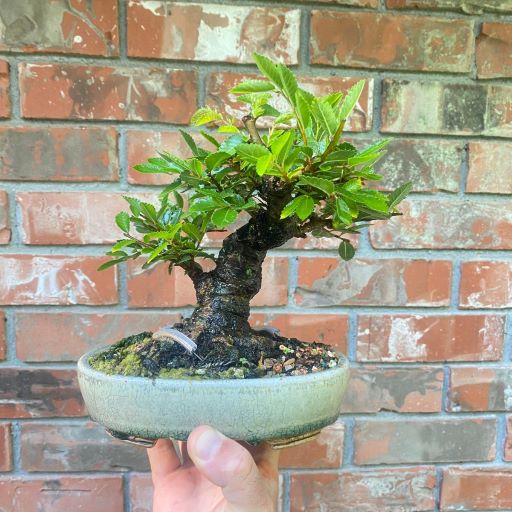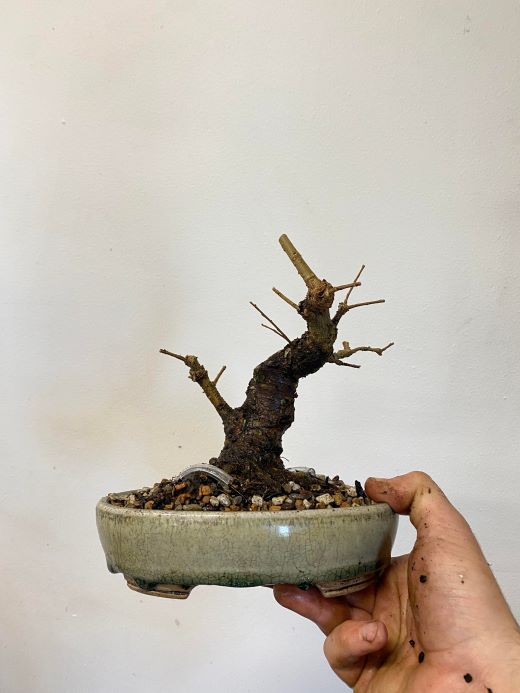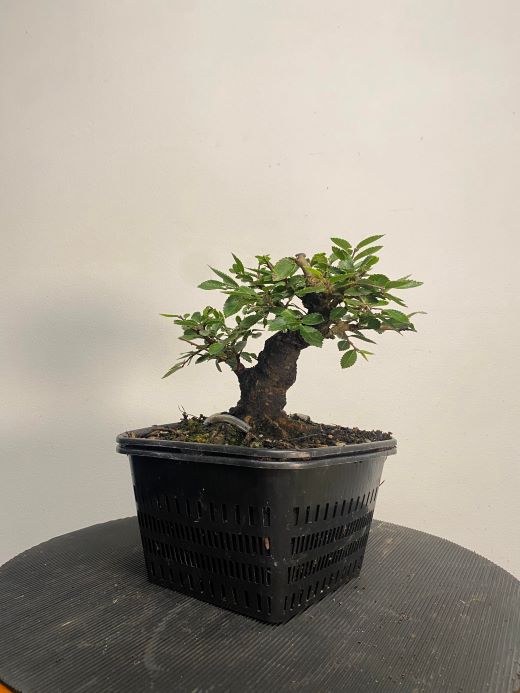I started this Chinese elm, Ulmus parvifolia, from cutting stock we had at the nursery. I wish I had taken photos of this tree when I first chopped it as it was repotted during a workshop that was all about repotting and developing proper nebari on elms. It just so happens that the little tree had excellent roots to form a nice uniform nebari completely around the base. This is one of the pay offs when growing out stock from cuttings instead of growing from seed. To start, you know exactly what the tree is going to look and how it will grow. On the other hand, you can get roots growing in every direction. After I chopped the tree I grew out a new leader to induce taper rather quickly, in fact it only took one year.

The image above shows the tree potted in a Sara Rayner oval I purchased at the national show the year before. I was able to develop this tree’s basic branch structure in less then a year as well. Here in Louisiana the growing season is so long (10-11 months) that I can “blow out” branches for diameter and prune them back as soon as they get to the size I need. Once I cut on these elms they readily back bud and run shoots again. To be honest I have to chase back long shoots on Chinese elm here nearly five times a year.

The image above shows the tree the day I potted it before it fully leafed out. I had to cut on the roots a good bit to get it to fit snuggly into this container. I’ve repotted many an elm so I know they are able to take this type of root reduction. Something to be know about U. parvifolia though, it will fill its container with roots much quicker then you think. By the time the second flush came in the tree came to almost a complete stop on pushing new buds. Why? There isn’t anymore room for fresh roots, in turn, there isn’t any more energy for new shoots.
We run into a problem with the health of the tree at this point. If I want to continue to grow and develop the finer twigging and heal wounds I need the tree to continue to grow. The solution, double pot!

I know a lot of people would ask: what’s the point of potting into a shallow show container if you can’t see it? Well, this isn’t permanent as I will let the roots grow down into the pond basket and then trim them off next spring. This will keep the tree healthy and growing new roots. U. parvifolia needs a full root trim nearly every year, then I’ll do what’s necessary for the tree that given repotting season. Double potting can keep your shohin healthy and strong as well as provide proper drainage throughout the toughest times of the year for the tree. To be more specific, the summers here in Louisiana are long, humid, and brutally hot so this method works great for me.
Another rule of thumb is that you always want your trees to be active and extending new shoots. Of course in older bonsai we want to slow them down by applying less intense root work and organic fertilizers but something should be happening with new growth or something isn’t right. This is one thing I stress especially with deciduous bonsai because if they are not strong then they become more susceptible to pests and diseases.
So if you have a collection of mame/shohin that you struggle with every year to keep them growing strong, double pot them and they’ll return to health. A lot of the time bonsai enthusiasts will become discouraged because every time they pot up a small tree into a small pot they run into issues with vigor after the first year and the tree may not even make it to the next grow season. Double potting and then cutting the excess roots off the next year works wonders.
-Evan
